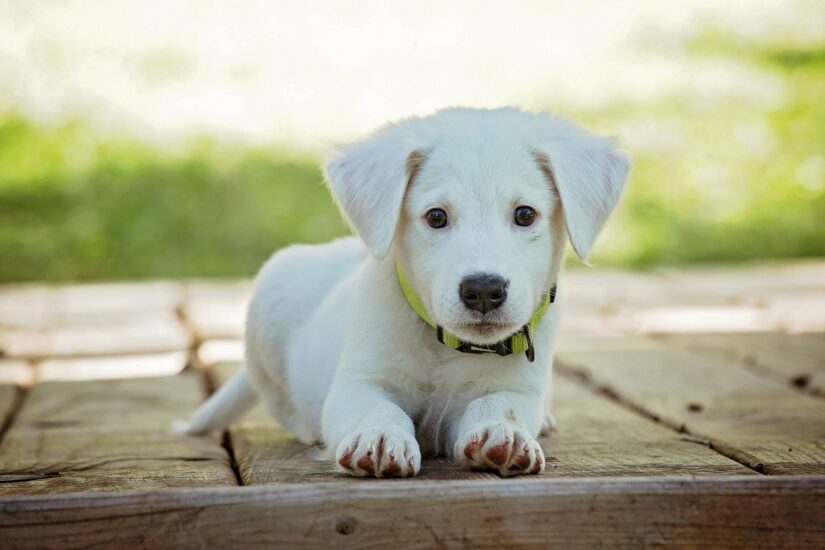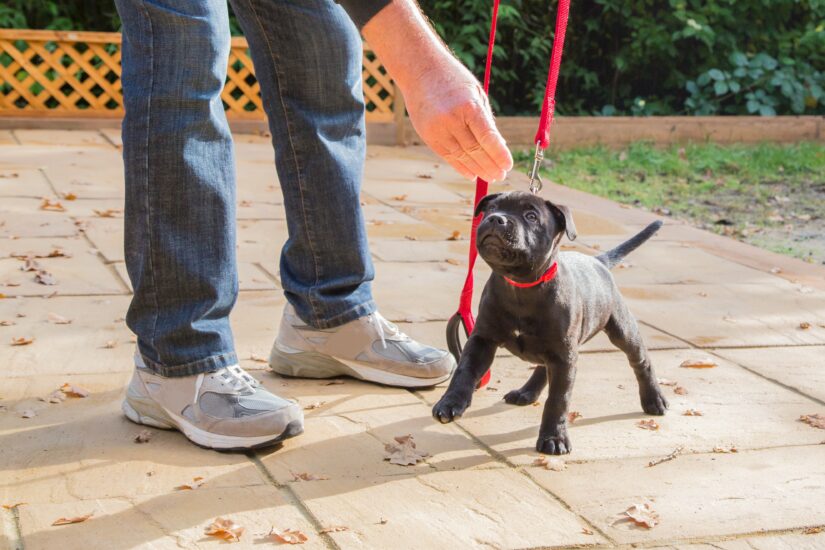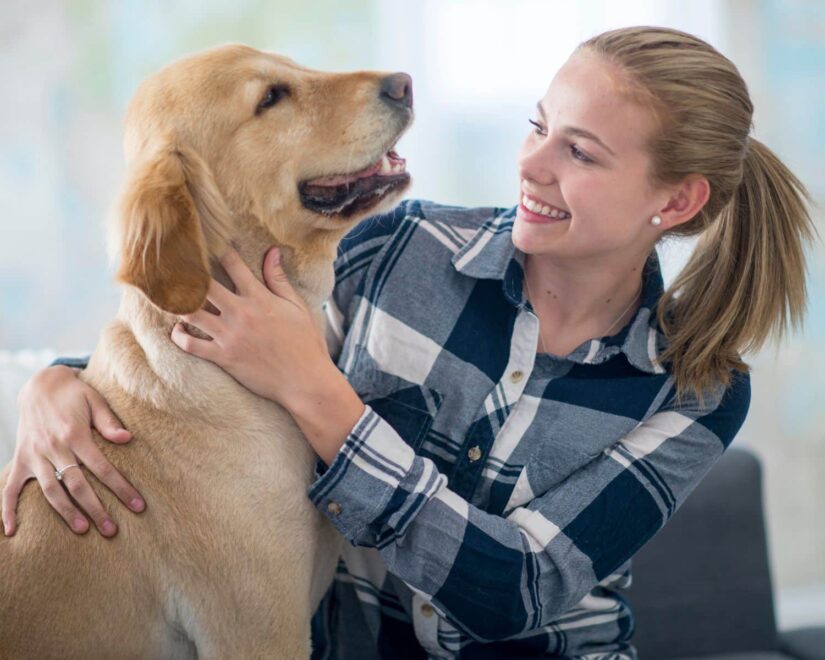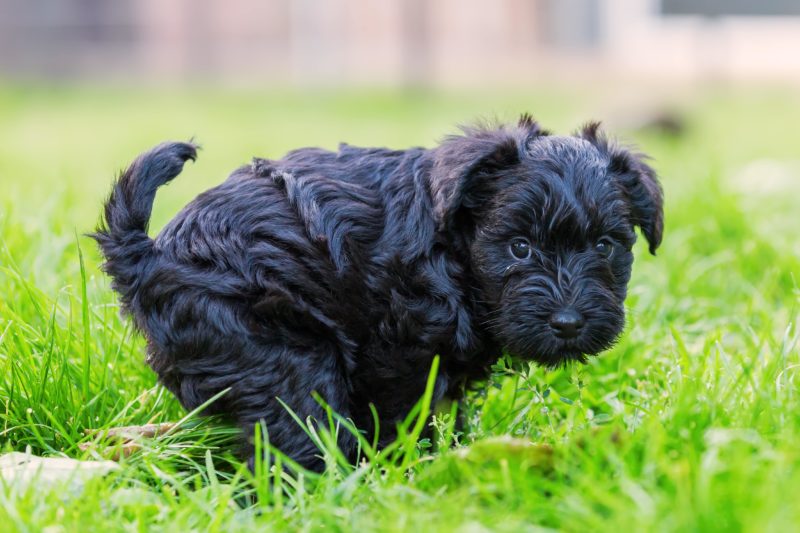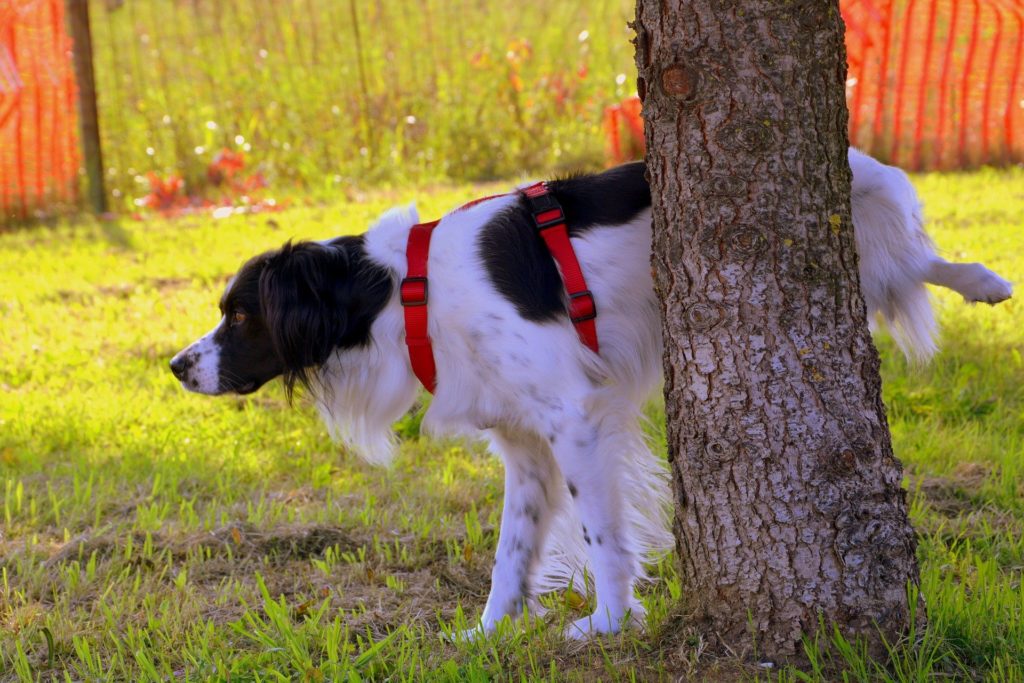Whether this is your first dog or one of many, bringing home a puppy is both exciting and challenging. Like children, puppies require significant time, expense, and emotional investment in their first year. They come in all shapes, sizes, temperaments, and breeds, but one truth holds steady: What you put into training and care is what you’ll get out of your lifelong bond.
If you ever come home to a chewed-up pair of shoes or a living room that looks like a storm has hit it, remember—it’s part of the learning curve. Consistency, patience, and preparation will make the transition smoother.
Ease your new pup into their home by providing consistency in daily routines, house rules, and expectations across all family members. Gradually allow them to explore each room while supervised and when the environment is calm. Once your puppy feels comfortable in their new environment, another important step to support their growth is establishing healthy nutrition habits.
Nutrition
- Feeding Frequency – Puppies need meals every 3-8 hours, depending on age, before transitioning to twice-daily feeding. Stick to a high-quality, protein-based diet that meets AAFCO standards.
- Feeding Method – Place food in a stainless steel or ceramic bowl for 10-15 minutes, then remove it until the next feeding. This helps regulate digestion and supports house training. Feeding in the crate can also encourage crate acceptance.
- Transitioning Diets – Start your puppy on the food they’re used to, then gradually switch to a new brand over 7-10 days to avoid an upset stomach. A gradual switch means mixing small amounts of the new food into the old food, slowly increasing the ratio of new to old each day until the transition is complete.
Explore the World Small Animal Veterinary Association (WSAVA) for a nutritional toolkit and body condition scoring chart, and the American Veterinanry Medical Association (AVMA) for food recall information.
Grooming
Pet grooming includes maintenance of skin and coat care, nails, ears, and dental hygiene. Most healthy dogs need baths no more than once a month, using a mild, soap-free shampoo. Start grooming early to help your pup get used to handling and tools.
- Ears – Ears should be cleaned with a mild drying solution and cotton balls after the bath. Moisture accumulated in the ear canals can make a perfect environment for bacteria and yeast to overgrow.
- Nails – Consider trimming nails one at a time when your pet is sleepy or hungry and can be bribed with a high-value treat (shredded cheese, peanut butter, and small bites of chicken breast). It’s best to set the clippers out for a few days near the food bowl to give your pet time to adjust to the tool.
- Teeth – Dental care should include brushing twice a week using dog-specific toothpaste in flavors like chicken or malt. Begin with gum massages to ease them into the process. To keep all 42 adult teeth healthy, you need to brush at least twice a week.
If you incorporate these steps into your routine, by the time your dog has their first professional grooming, they should feel comfortable—and maybe even look forward to it.
Socialization & Training
The golden window for puppy socialization is 2-weeks to 3-months of age, when they’re most receptive to new experiences. Expose them gradually to different people, surfaces, sounds, pets, and environments.
- Positive Reinforcement – Reward good behavior with praise, treats, and play.
- Training Basics – Introduce a collar and leash early. Keep training sessions short but frequent. Puzzle toys, hide-and-seek with kibble, and simple commands will build mental sharpness.
- Philosophy – Remember the principle that “nothing in life is free”. A puppy learns to earn what they want—walks, food, or attention—by calmly following cues like “sit”.
Crate Training
A crate can be your best tool for training and safety. Make it a positive space by adding bedding, toys, and occasional treats like frozen Kong-stuffed with peanut butter. Puppies quickly learn the crate is their den, not a punishment.
Crates are also invaluable for housebreaking—dogs naturally avoid soiling their resting space when given regular opportunities to go outside.
Potty Training
Potty training your puppy takes patience and consistency, but sticking to a routine makes the process much smoother. Keep these key tips in mind:
- Take your puppy to the same outdoor spot every time for familiarity.
- Use a consistent phrase like “potty time” to recognize the action they are doing.
- Reward them immediately after elimination, as they have short attention spans.
- A good rule of thumb: Puppies can “hold it” for their age in months plus one hour (e.g., a 2-month-old pup can last about 3 hours).
Sitting & Walking Considerations
When planning for a new puppy, it’s important to think beyond food, toys, and vet visits—consider the cost and logistics of dog sitting or walking. Whether you’re traveling, working late, or attending evening events, professional pet care professionals, like those at Pet Butler, can help keep your puppy happy, safe, and well-exercised. Budgeting for these services in advance ensures you’re not caught off guard and helps you plan for consistent care. For a detailed guide on what to expect when it comes to these expenses, check our full breakdown here: Costs to Consider as You Budget for a New Dog.
Preventative Health Care
Keeping your puppy healthy goes beyond love and training—it requires proactive veterinary care. Here are the essentials every new pet parent should plan for:
- Vaccinations – Puppies usually begin vaccines at 6-8 weeks, with boosters every 3-4 weeks until 16 weeks of age. Afterward, annual or triannual boosters may be needed.
- Spay/Neuter – The timing depends on breed, lifestyle, and health. Many shelters spay or neuter before adoption to prevent overpopulation. However, if you chose not to adopt, consult with your veterinarian during your vaccination appointments to discuss the best time to spay or neuter your special pup.
- Vet Visits – Regular check-ups track your puppy’s growth, behavior, and organ function. Bring a fresh stool sample to each appointment.
Watch for changes in appetite, urination, or energy—small symptoms can signal larger issues.
Don’t Forget Waste Clean Up
One of the less glamorous, but essential, parts of pet ownership is picking up after your dog. Dog waste can damage lawns, spread parasites, and pollute airways. A puppy’s health is so crucial to take care of, similar to taking care of a newborn baby. We want to keep them safe!
If keeping up feels overwhelming, Pet Butler offers professional dog waste removal services. We handle the dirty work so you can focus on bonding with your new best friend.
FAQs About Puppy Care
When should I start training my puppy?
You typically shouldn’t have a puppy separated from its mother younger than about 6-8 weeks. So, begin as early as 6-8 weeks old, focusing on socialization, leash training, crate introduction, and basic commands.
How often should I groom my puppy?
Most puppies need a bath no more than once a month. Nail trims, ear cleaning, and dental care should be done weekly to biweekly as needed.
How do I manage potty training effectively?
Take your puppy to the same outdoor spot consistently, reward immediately after elimination, and use a consistent cue word like “potty time”.
Should I budget for sitting or walking?
Yes! Professional sitting or walking can help ensure your puppy receives consistent care when you’re unavailable. Pet Butler pet care services can help you manage this!
Final Thoughts
Owning a puppy means embracing joy, challenges, and responsibilities in equal measure. With preparation—a create, leash, quality diet, grooming tools, sitting/walking plans, and perhaps a scooping partner—you’ll set your puppy (and yourself) up for success.
Congrats on your new best friend!
